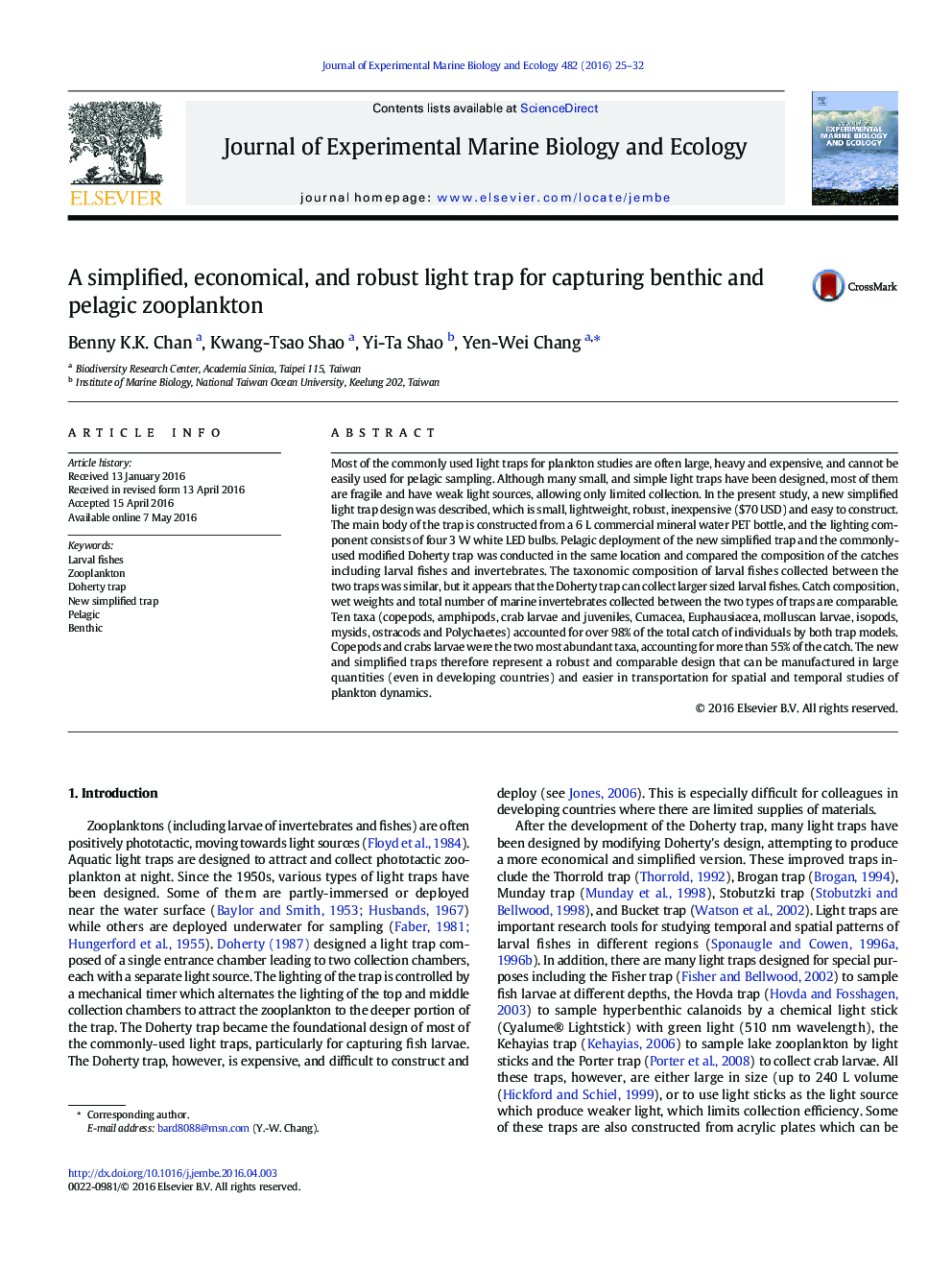| Article ID | Journal | Published Year | Pages | File Type |
|---|---|---|---|---|
| 4395233 | Journal of Experimental Marine Biology and Ecology | 2016 | 8 Pages |
Abstract
Most of the commonly used light traps for plankton studies are often large, heavy and expensive, and cannot be easily used for pelagic sampling. Although many small, and simple light traps have been designed, most of them are fragile and have weak light sources, allowing only limited collection. In the present study, a new simplified light trap design was described, which is small, lightweight, robust, inexpensive ($70 USD) and easy to construct. The main body of the trap is constructed from a 6Â L commercial mineral water PET bottle, and the lighting component consists of four 3Â W white LED bulbs. Pelagic deployment of the new simplified trap and the commonly-used modified Doherty trap was conducted in the same location and compared the composition of the catches including larval fishes and invertebrates. The taxonomic composition of larval fishes collected between the two traps was similar, but it appears that the Doherty trap can collect larger sized larval fishes. Catch composition, wet weights and total number of marine invertebrates collected between the two types of traps are comparable. Ten taxa (copepods, amphipods, crab larvae and juveniles, Cumacea, Euphausiacea, molluscan larvae, isopods, mysids, ostracods and Polychaetes) accounted for over 98% of the total catch of individuals by both trap models. Copepods and crabs larvae were the two most abundant taxa, accounting for more than 55% of the catch. The new and simplified traps therefore represent a robust and comparable design that can be manufactured in large quantities (even in developing countries) and easier in transportation for spatial and temporal studies of plankton dynamics.
Related Topics
Life Sciences
Agricultural and Biological Sciences
Aquatic Science
Authors
Benny K.K. Chan, Kwang-Tsao Shao, Yi-Ta Shao, Yen-Wei Chang,
